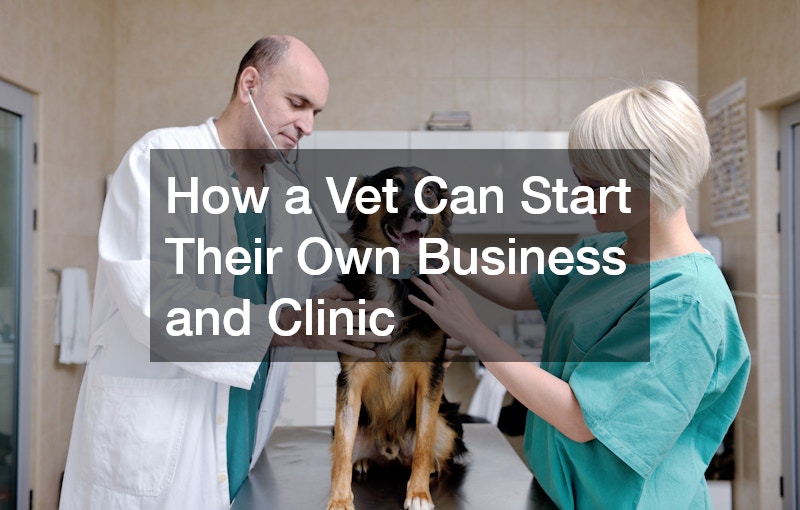Many veterinarians dream of starting their own clinic as it provides an opportunity to control their professional journey while making a significant impact on animal health. Although the path to ownership is fraught with challenges like financial management and regulatory compliance, it can also be incredibly rewarding in terms of autonomy, creative freedom, and personal satisfaction.
What are the Initial Steps a Vet Should Take to Start Their Business?
Researching the Veterinary Market
Conducting thorough market research is essential for understanding the current landscape and identifying gaps where new services can be introduced. By examining competitors, aspiring clinic owners can pinpoint their unique value propositions and design offerings that cater to unmet needs.
Vetpreneurs should gather data on demographics, pet ownership trends, and consumer preferences to tailor services effectively. This information helps in crafting strategies that align with customer expectations and stand out in a competitive market.
Furthermore, surveys and focus groups can offer insights into client expectations, allowing for the customization of both medical and customer services. A comprehensive understanding of the industry landscape is pivotal to launching a successful and sustainable veterinary practice.
Creating a Business Plan
A well-structured business plan is a roadmap that guides a vet through the startup process, outlining objectives and strategies for achieving them. It involves financial forecasting, which anticipates revenue, expenses, and capital requirements, thereby reducing the risk of unexpected financial setbacks.
Strategic planning is crucial to set short-term and long-term goals, aligning everyday operations with overarching visions for growth and success. Vets must revisit and update their business plans regularly to adapt to changes in the market environment and business landscape.
Aside from serving as an internal tool, a detailed business plan can also attract potential investors or secure loans, thereby solidifying financial backing. The clarity and direction a business plan provides are indispensable for guiding decisions and sustaining growth.
How Can a Vet Secure Financing for Their Clinic?
Exploring Funding Options
A variety of funding sources are available for vets looking to start their clinics, including traditional loans, private investors, and grants specifically targeted at small business development. Loans from banks or credit unions are common but require a solid credit score and a comprehensive business plan.
Alternatively, seeking out investors who are passionate about veterinary care or have existing ties to the industry can offer not only financial support but mentorship and networking opportunities. Grants, while competitive, provide non-repayable funds and often focus on innovation and community impact.
It’s imperative to weigh the pros and cons of each financing option, considering factors like interest rates, repayment terms, and investor expectations. Selecting the right mix of funding sources will provide stability and support ambitious expansion plans.
Preparing for Financial Stability
Budgeting is the cornerstone of financial stability, helping vets to allocate resources effectively and avoid overspending in the initial phases. Creating a detailed budget with projections for at least three years will offer insights into financial health and cash flow management.
Managing expenses by controlling operational costs and streamlining processes can improve the bottom line, allowing funds to be redirected towards growth initiatives. Regularly reviewing financial statements ensures anomalies are quickly addressed and corrective measures are implemented timely manner.
Proper financial planning offers the dual benefit of preparedness for unforeseen circumstances and the agility to innovate and expand services as opportunities arise. This approach is critical for long-term success and resilience against market fluctuations.
What Are the Legal Requirements for Starting a Veterinary Clinic?
Licensing and Certification
Acquiring the necessary licenses and certifications is a fundamental step in establishing a legal veterinary clinic. These credentials not only validate a vet’s qualifications but also assure clients of their competence and adherence to industry standards.
The requirements can vary significantly depending on jurisdiction, often including state licenses, DEA registration for controlled substances, and certifications in specialized areas of veterinary medicine. Maintaining these qualifications requires continuing education and periodic recertification.
Understanding and fulfilling these requirements protects the clinic from potential legal complications and fines, ensuring smooth operations and enhanced reputability. Compliance is paramount, as it upholds the welfare and safety of both animals and clients.
Understanding Local Regulations
Local regulations must be meticulously adhered to, encompassing zoning requirements, waste management policies, and health and safety standards. Zoning laws dictate where a veterinary clinic can be established, impacting location decisions and leasing agreements.
Proper waste disposal is critical in a veterinary setting to prevent contamination and adhere to environmental protections; thus, clinics must establish rigorous waste management protocols. Familiarity with health and safety standards is vital, ensuring equipment and practices meet legal specifications to protect both clients and staff.
Adhering to these regulations not only ensures compliance but also builds trust within the local community, whose support is crucial for business sustainability. These efforts contribute to the clinic’s reputation as a responsible and professional establishment.
How Should a Vet Design and Equip Their Clinic?
Clinic Layout and Design
Designing a veterinary clinic layout that prioritizes efficiency and patient comfort can greatly enhance the client experience. Open and welcoming reception areas, paired with separate zones for different services, streamline operations and reduce stress for both pets and owners.
Functional designs that incorporate ample natural light and soundproofing can create a calming atmosphere, essential for a setting often associated with anxiety or discomfort. Efficient spatial arrangements facilitate better workflow among staff, decreasing wait times and improving service delivery.
Purchasing Equipment and Supplies
Investing in essential medical equipment and supplies is critical, necessitating a balance between quality and budget constraints. Initially focusing on fundamental pieces while setting provisions for future upgrades can help manage costs without sacrificing care standards.
Ongoing inventory management is vital to avoid shortages, ensure efficient operations, and mitigate waste. Leveraging technology for inventory tracking can streamline reorder processes and optimize stock levels to meet client demand.





